
John Beatty, University of British Columbia
Posted on 03/05/2008 8:20:02 AM PST by Sopater
It's not Yasgur's Farm, but what happens at the Konrad Lorenz Institute in Altenberg, Austria this July promises to be far more transforming for the world than Woodstock. What it amounts to is a gathering of 16 biologists and philosophers of rock star stature – let's call them "the Altenberg 16" – who recognize that the theory of evolution which most practicing biologists accept and which is taught in classrooms today, is inadequate in explaining our existence. It's pre the discovery of DNA, lacks a theory for body form and does not accomodate "other" new phenomena. So the theory Charles Darwin gave us, which was dusted off and repackaged 70 years ago, seems about to be reborn as the "Extended Evolutionary Synthesis".
Papers are in. MIT will publish the findings in 2009 – the 150th anniversary of Darwin's publication of the Origin of Species. And despite the fact that organizers are downplaying the Altenberg meeting as a discussion about whether there should be a new theory, it already appears a done deal. Some kind of shift away from the population genetic-centered view of evolution is afoot.
Indeed, history may one day view today's "Altenberg 16" as 19th century England's "X Club" of 9 – Thomas Huxley, Herbert Spencer, John Tyndall, et al. – who so shaped the science of their day.
Here then are the Altenberg 16:

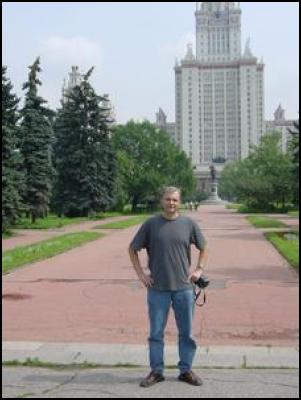
Sergey Gavrilets, University of Tennessee
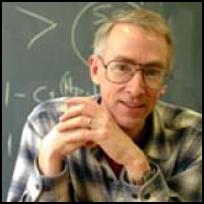
David Sloan Wilson, Binghamton University
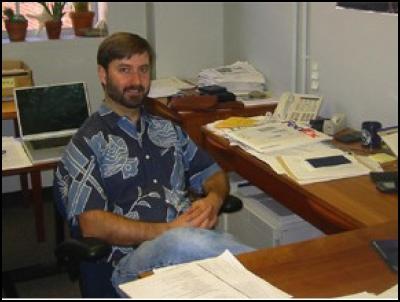
Greg Wray, Duke University

Michael Purugganan, New York University

Eva Jablonka, Tel-Aviv University
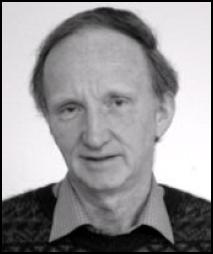
John Odling-Smee, Oxford University
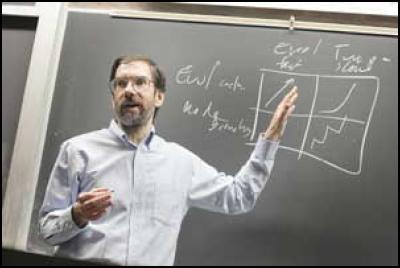
David Jablonski, University of Chicago
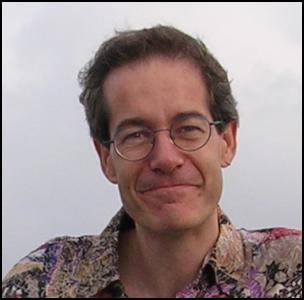
Massimo Pigliucci, SUNY Stony Brook
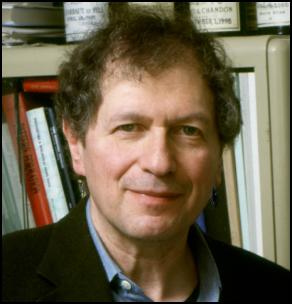
Stuart Newman, New York Medical College

Gerd Muller, University of Vienna
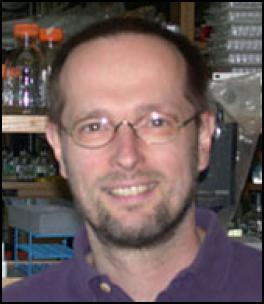
Gunter Wagner, Yale University
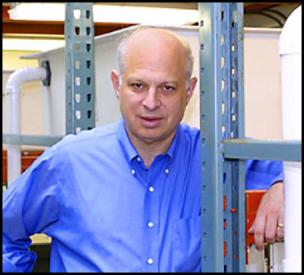
Marc Kirschner, Harvard University

Werner Callebaut, Hasselt University

Eors Szathmary, Collegium Budapest
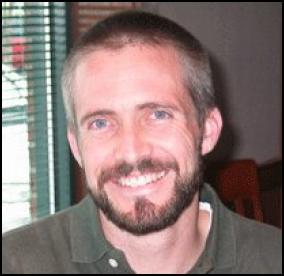
Alan Love, University of Minnesota
A central issue in making a new theory of evolution is how large a role natural selection , which has come to mean the weeding out of traits that don't favor survival, gets to play.
Natural selection was only part of Darwin's Origin of Species thinking. Yet through the years most biologists outside of evolutionary biology have mistakenly believed that evolution is natural selection.
A wave of scientists now questions natural selection's relevance, though few will publicly admit it. And with such a fundamental struggle underway, the hurling of slurs such as "looney Marxist hangover", "philosopher" (a scientist who can't get grants anymore), "crackpot", is hardly surprising.
When I asked esteemed Harvard evolutionary geneticist Richard Lewontin in a phone conversation what role natural selection plays in evolution, he said, "Natural selection occurs."
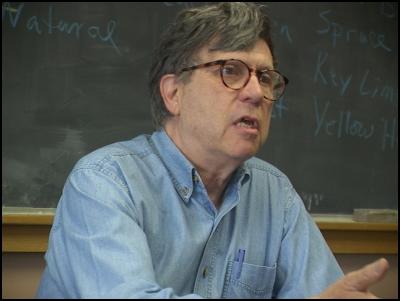
Lewontin thinks it's important to view the living world holistically. He says natural selection is not the only biological force operating on the composition of populations. And whatever the mechanism of passage of information from parent to offspring contributing to your formation, what natural selection addresses is "do you survive?"
In an aside, Lewontin noted natural selection's tie-in to capitalism, saying, "Well, that's where Darwin got the idea from, that's for sure. . . He read the stock market every day. . .How do you think he made a living?"
Stanley Salthe, a natural philosopher at Binghamton University with a Ph.D. in zoology -- who says he can't get published in the main stream media with his views – largely agrees with Lewontin.
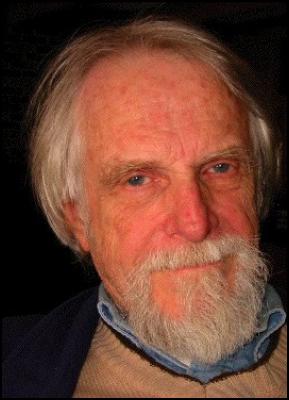
But Salthe goes further. He told me the following:
"Oh sure natural selection's been demonstrated. . . the interesting point, however, is that it has rarely if ever been demonstrated to have anything to do with evolution in the sense of long-term changes in populations. . . . Summing up we can see that the import of the Darwinian theory of evolution is just unexplainable caprice from top to bottom. What evolves is just what happened to happen."
Several months ago, Salthe hosted an intense email debate among leading evolutionary thinkers which I was later let in on. It followed the appearance of an article by Rutgers University philosopher Jerry Fodor in the London Review of Books called "Why Pigs Don't Have Wings".
In the piece, Fodor -- who told me he left MIT because he wanted to be closer to opera in New York -- essentially argues that biologists increasingly see the central story of Darwin as wrong in a way that can't be repaired.

When I called Fodor to discuss his article, he joked that he was now in the Witness Protection Program because he'd been so besieged following the LRB piece. But we met for coffee anyway, on Darwin's birthday, as frothy snowflakes floated to ground around Lincoln Center. After a cappuccino or two, Fodor summed things up saying we've got to build a new theory and "all I'm wanting to argue is that whatever the story turns out to be, it's not going to be the selectionist story".
Fodor also told me that "you can't put this stuff in the press because it's an attack on the theory of natural selection" and besides "99.99% of the population have no idea what the theory of natural selection is".
Fodor noted in the LRB article that evolutionary investigators are looking to the "endogenous variables" for answers, which leaves plenty of room for interpretation. On that point there is considerable agreement.
But Richard Lewontin told me he resents evolutionary biology being "invaded by people like Jerry Fodor and others" as well as by some from within the field who don't really know the "mechanical details down to the last".
Evolutionary biologist and philosopher Massimo Pigliucci is also critical of Fodor for not seeing "the big picture". Pigliucci is a principal architect of the "Altenberg 16" meeting as well as a participant. That rare combination -- a consummate scientist with a sense of humor!
I met him one afternoon across the street from the New York Public Library during a break from his research. He had a birthday gift in one arm. Pigliucci says he enjoys life.
But while he thinks Fodor is "dead wrong" about natural selection becoming irrelevant to the theory of evolution, he does recognize the value philosophers, in general, bring to science. Several of the Altenberg 16 participants are, in fact, philosophers – including, of course, Pigliucci.
Pigliucci says philosophers have two roles to play in science. One is to keep scientists – who are focused on the details – honest by looking from a distance and asking the big questions: "Well, is the paradigm that you're working with, in fact, working? Is it useful? Could it be better?"
The second is as public intellectuals. He thinks some of the best responses he's seen against Intelligent Design and Creationism, for instance, have been by philosophers. Pigliucci's philosophy web site Rationally Speaking carries the words of the Enlightenment's Marquis de Condorcet describing a public intellectual as one who devotes "him or herself to the tracking down of prejudices in the hiding places where priests, the schools, the government and all long-established institutions had gathered and protected them".
So what are those other engines of evolution that threaten to decommission natural selection – those "endogenous variables" -- of which Jerry Fodor speaks in his now infamous "Why Pigs Don't Have Wings" article?
Pigliucci cites epigenetic inheritance as one of the mechanisms that Darwin knew nothing about. He says there is mounting empirical evidence to "suspect" there's a whole additional layer chemically on top of the genes that is inherited but is not DNA. Darwin, of course, did not even know of the existence of DNA.
Lewontin asks whether it's "suspect" or "know"?
Nevertheless, these kinds of phenomena are part of what's loosely being called self-organization , in short a spontaneous organization of systems. Snowflakes, a drop of water, a hurricane are all such spontaneously organized examples. These systems grow more complex in form as a result of a process of attraction and repulsion.
So, coming up with a "sound" theory for form is one of the big challenges for the Altenberg 16.
Developmental biologist Stuart Kauffman is clearly one who thinks we must expand evolutionary theory. Kauffman, now head of the Biocomplexity and Informatics Institute at the University of Calgary, is known for his decades-long investigations into self-organization. He's been described by one evolutionary biologist as a "very creative man, try reading one of his books" who said in the next breath that "if he [Kauffman] really put an effort into understanding evolutionary biology -- the basic theoretical framework that we have -- I think he could have come a lot further".
Meanwhile, Kauffman's had a breathtaking career, beginning as a medical doctor, honored as a MacArthur fellow (genius) and has worked with Nobel prize winner Murray Gell-Mann at the Santa Fe Institute where he first studied self-organization. Looking at simple forms like the snowflake, he noted that its "delicate sixfold symmetry tells us that order can arise without the benefit of natural selection". Kauffman says natural selection is about competition for resources and snowflakes are not alive -- they don't need it.
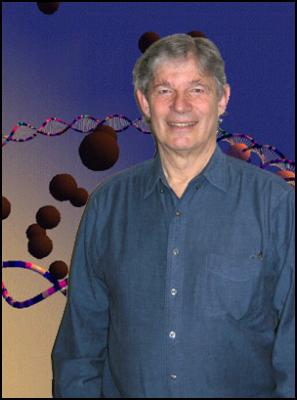
But he reminded me in our phone conversation that Darwin doesn't explain how life begins, "Darwin starts with life. He doesn't get you to life."
Thus the scramble at Altenberg for a new theory of evolution.
But Kauffman also describes genes as "utterly dead". However, he says there are some genes that turn the rest of the genes and one another on and off. Certain chemical reactions happen. Enzymes are produced, etc. And that while we only have 25,000 to 30,000 genes, there are many combinations of activity.
Here's what he told me over the phone:
"Well there's 25,000 genes, so each could be on or off. So there's 2 x 2 x 2 x 25,000 times. Well that's 2 to the 25,000th. Right? Which is something like 10 to the 7,000th. Okay? There's only 10 to the 80th particles in the whole universe. Are you stunned?"
It's getting pretty staggering I told him. But there was more to come as he took me into his rugged landscapes theory – hopping out of one lake into a mountain pass and flowing down a creek into another lake and then wiggling the mountains and changing where the lakes are – all to demonstrate that the cell and the organism are a very complicated set of processes activating and inhibiting one another. "It's really much broader than genes," he said.
Kauffman presents some of this in his new book Reinventing the Sacred .
And natural selection is back in the equation.
In his book Investigations (2000), Kauffman wrote that "self-organization mingles with natural selection in barely understood ways to yield the magnificence of our teeming biosphere". He said he's still there, but now thinks natural selection exists throughout the universe.
Stuart Pivar, has been investigating self-organization in living forms but thinks natural selection is irrelevant – and has paid the price for this on the blogosphere. Pivar's an extremely engaging man, trained as a chemist and engineer – a bit of a wizard who loves old art. He was a long-time friend of Andy Warhol and a buddy of the late paleontologist Steve Gould, who continues to serve as an inspiration for Pivar's work.

Steve Gould's Natural History magazine editor Richard Milner, by the way, describes Gould as "a popular articulator of Darwinian evolution to a new generation, while privately, his creative and rebellious mind sought to move beyond it."
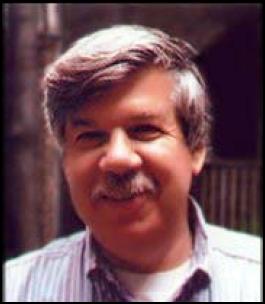
Milner , himself, is a Darwinian scholar and author of the Encyclopedia of Evolution and Darwin's Universe (forthcoming 2009). He says Gould was intrigued with theories of how natural selection may act on levels beyond the individual (social groups, species), or at different phases of the life cycle (evolution-development), and how other embryological and evolutionary phenomena (heterochrony, neoteny) may influence or impact evolution. And he notes that "Gould took issue with those who used natural selection carelessly as a mantra, as in the evidence-free "just-so stories" concocted out of thin air by mentally lazy adaptationists".
Gould also famously rejected the reductionism of Richard Dawkins' "selfish gene" theory, Milner says further, and was well aware that there seemed to be a disconnect between the models of genes, DNA, and the development of individual plants or animals.
Says Milner:
"Steve was one of the first evolutionary biologists, with Richard Lewontin, to publish the view that biology offered no plausible mechanism – a missing "theory of form," if you will – for how these genomic "blueprints" are followed in constructing phenotypes of living organisms."
I visited Stuart Pivar at his place just off New York's Central Park recently. It has the feel of a 19th century castle with interesting stuffed animals, rocks and other exotica, mixed in with important paintings and bronzes. Unlike most scientists I spoke with for this story, Pivar is not dependent on government grants to carry out his work.
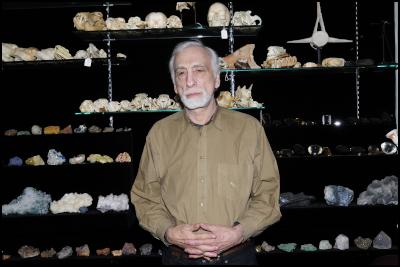
Pivar says his theory is this. Body form is derived from the structure in the egg-cell membrane. And he handsomely illustrates in his book, The Engines of Evolution , how various species arise from the same basic structure, the Multi-torus, so-named by its discoverers -- mathematicians, biologists Jockusch and Dress in 2003.
Pivar told me this structure was confirmed recently by Eric Davidson's identification of the sea urchin embryo as a dynamic torus, resembling a slow-moving elongated smoke ring -- as in amoeboid motion.
If there's a lineage to his work, Pivar says it's rooted in Goethe, who observed that all life has a certain look to it – therefore it must be based on a form he called the "urform" – although Goethe never found the urform. Pivar's also been influenced by the 19th century scientist Wilhelm His, who made models using tubes of wax and pressed them to demonstrate how mechanical manipulation could generate the shape of the stomach, etc.
"The great D'Arcy Thompson was an inspiration as well," he said, citing Thompson's book On Growth and Form in which he described how every form in nature could be duplicated in the lab. Pivar said it's unfortunate Thompson never put the whole thing together to make a model, but that he has done just that.
He says he's shown that if you take a tubular form and you twist it this way or that way you can generate the shape of anything in nature. He notes this is equivalent to the organization of chemistry by the periodic table. This twisting action is how tigers get stripes, butterflies wing patterns, as well as how the human embryo forms.
In Engines, he has published what he describes as "the blueprints" – the construction blueprints for the human body, fruit fly, lobster, jellyfish -- the scheme by which all nature forms.
Stanley Salthe says he considers the theory of self-organization itself "up & coming" and thinks Pivar's idea is "reasonable".
Richard Lewontin, told me the following:
"I don't know what his [Pivar's] theory is but there's no question that the development of an egg is not dependent solely on the genes and nucleus, but on the structure of the egg as laid down to some extent. There are proteins that are there. There are non-genetic factors and I wouldn't be surprised if the actual structure of the cell membrane had some influence on the successive divisions that occur."
However, Lewontin added that "it's one thing to say some effect than it is to say I have a theory that it's allthere."
Pivar insists "It's all there."
Massimo Pigliucci does not consider Pivar's test with "wiggly water tubes" empirical evidence.
Pivar disagrees saying he presents a convincing model based on geometry and the animated drawings in his book but laments that he can't get serious science circles to review Engines. He attributes this reluctance to scientists being discouraged about taking a chance on ideas originating outside their peer group plus their dependence on government grants – which are tied-in to support for natural selection.
Pivar's also a keen observer of some of the conflicts of interest tainting science. He accuses the National Academy of Sciences of excluding other approaches to evolution but natural selection in their recent book Science, Education and Creationism.
Richard Lewontin resigned from NAS over the issue of one branch of NAS accepting government funds for secret weapons programs.
Pivar is also critical of church and state influences in science education, like the Astrobiology Primer funded by NASA, whose editor is a priest.
Fodor goes further, he says, "Astrobiology doesn't exist. What are the laws?"
Finally Pivar thinks non-profits advising schools on science education, like the National Center for Science Education, should not have religions represented on their board of directors. Pivar is obliquely referring to NCSE's board member from the. Church of Jesus Christ of Latter Day Saints-funded Brigham Young University .
Curiously, when I called Kevin Padian, president of NCSE's board of directors and a witness at the 2005 Kitzmiller v. Dover trial on Intelligent Design, to ask him about the evolution debate among scientists – he said, "On some things there is not a debate." He then hung up.
Massimo Pigliucci finds it objectionable that "the study of forgiveness" is supported by the John Templeton Foundation, which funds the understanding of religion from a Christian view of God. Pigliucci says the rationale of scientists who take this money is that it's hard to get grants, that they have to put their children through school, etc. "Well, yes -- but there has to be a limit," he thinks.
As for educating the public about evolution, paleontologist Niles Edredge, a co-author with Steve Gould of the punctuated equilibrium theory – which Eldredge reminded me was based on one of his early papers – says that increasingly scientists are being encouraged to include public outreach when asking for government grants.
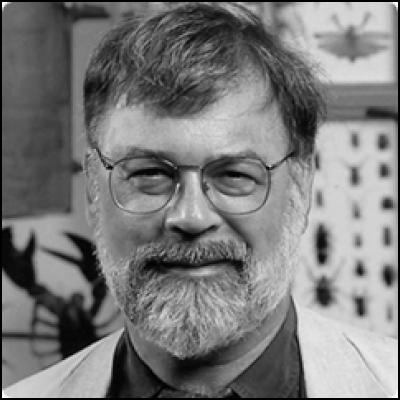
Eldredge told me about the new journal that he and his son Gregory, a high school teacher in New York, are publishing through Springer called: Outreach and Education in Evolution. It debuts in March and will feature peer-reviewed articles about evolution.
I also spoke with evolutionary biologist Michael Lynch at his lab at Indiana University to get his perspective on the evolution debate.
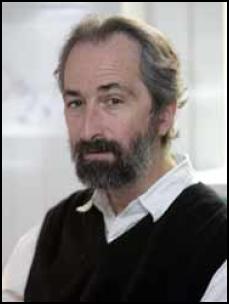
Lynch is the author of the recent book The Origins of Genome Architecture. He says it's hard enough just to be a molecular biologist or a cell biologist and that reaching out to communicate to other fields is a "daunting task". He doesn't know why there's a push for an Extended Evolutionary Synthesis and says, "Everyone's bantering around these terms complexity, evolvability, robustness, and arguing that we need a new theory to explain these; I don't see it."
Lynch thinks the big challenge is to connect evolution at the genome level with cell development and the larger phenotypic level.
I asked Richard Lewontin whether it was premature to put together a new synthesis. He said he wouldn't use the world "premature" and added, "Why would we want to do that? To say it's premature suggests that one of these days we will have to. I don't know what we'll have to do in the future."
He continued:
"The so-called evolutionary synthesis – these are all very vague terms. . . . That's what I tried to say about Steve Gould is that scientists are always looking to find some theory or idea that they can push as something that nobody else ever thought of because that's the way they get their prestige. . . .they have an idea which will overturn our whole view of evolution because otherwise they're just workers in the factory, so to speak. And the factory was designed by Charles Darwin."
Clearly a new theory of evolution will impact all our lives. But how? Perhaps a global public broadcast of the "Altenberg 16" proceedings is the answer to that question.
whop-ping post
ping

Between this and the Democrats, I don’t think the world has enough popcorn.
My original argument with this person was along the lines that to believe in the theory of Origins as laid out by evolutionist, it takes far greater faith then that required to believe that God created us. He said science didn’t involve faith. The following is an excerpt from my correspondence with him:
“In my first e-mail to you, I made a statement about faith being required to believe in evolution. Massimo reaffirms this on page 28 where he says, “Although we all necessarily have to make assumptions about the world in order to live our lives, some assumptions represent small and others large leaps of faith and science is distinguished by an attempt to make those leaps as small as possible—in fact, no larger than any person of common sense would make ”
• He demonstrates a few of those leaps of faith when he states that science is not immune from ideology or social pressure (p.66), or on p. 145 that science can not draw conclusions about things it can not measure (like a primitive organisms (p. 203) or transitional forms or how non life created life or how mutations could add genetic information vs. subtract information, etc.), or how science is subjective because it is done by human beings (p.248), or how it is influenced by politics in academia (p.262), or that scientists will “stretch a point if it fits with the scenario he is trying to convene” and that he MAY not get away with it under peer review (p. 228-229).”
I’m thinking that if any of these scientists are honest they will see the error of Darwins folly. However, I’m not holding my breath. What I expect is for them to come back saying that they have discussed it, and conclude that any dissension from Darwins theory will no longer be tolerated. Case closed.
The artist stuck the various paintings together following a design principle that Lynch proposes is behind development of forms.
He was absolutely immersed in the movies.
So, yeah, I think I understand what these guys are looking for ~ and it ain't another demigod like "Natural Selection".
DNA can arise similarly ~
In quantity or quality?
Well, it is a lot of what that I have yet to determine.
The source is strange - I had not realized that the Wichita Falls city council had come out against the Patriot Act, for example.
Within 5,000 years we are going to lose track of what we've done and what was already there.
So, yes, "can", ~ self-assembly ~
Your original post equated the order snowflakes with the order and information contained in DNA. You said that DNA “can arise” similarly.
In your second post, you went way off the rails.
It's possible to crush pure water sufficiently to force its atoms into double-helix molecules.
Stuff happens.
The polarization of faith and faithful scientists disturbs me deeply. This is how I think things line up:
4,500+ million years ago there is light
3,500 million years ago - Precambrian (began), ooze, photosynthetic life appearing late
600 million years ago - Cambrian, explosion of marine life forms, huge variety
425 million years ago - Silurian, explosion of land life forms, first plants
405 million years ago - Devonian, first seed plants (in only 20 mil yr! We gardeners appreciate the difference), first amphibians
220 million years ago - Triassic, dinosaurs
181 million years ago - Jurassic, first flowering plants, birds
135 million years ago - Cretaceous, monocotyledons, oak and maple forests, Alps, Himalayas, Andes, Rocky Mountains the extinction of the dinosaurs as a finale. The K/T discontinuity world-wide.
65 million years ago - Tertiary, 35 mil yrs Oligocene Epoch appearance of most modern genera of mammals and monocotyledons
0.004 million years ago civilizations learn to write, all over the world at about the same time.
0.002 million years ago philosophy is advanced enough to describe the New Covenant in The best Greek of the New Testament, the Book of Hebrews, to Jews in Rome. Would that our society were as well read.
0.002 million years later Free Republic provides a forum, as the Nation Under God is bringing Liberty to the Cradle of Civilization and the birthplace of Abraham, the site of Daniel’s vision of the Ancient of Days the repository of the treasures of the first Temple, the captivity of Israel.
Life on this earth, on this planet with a molten core, a magnetic field, plate tectonics ( understood in only our lifetimes), distributed continents and a single moon so large as to cause our oceans to breathe, has developed in the last seconds of the last minutes of the last hour of the clock of the firmament.
And yes, I am still stubborn and stiff-necked. And I have no right to be here, but for prevenient grace.
What demonstrates that “DNA can arise similarly”?
Manufacturing DNA wouldn’t be “similarly” to how snowflakes arise.
Natural selection was only part of Darwin's Origin of Species thinking. Yet through the years most biologists outside of evolutionary biology have mistakenly believed that evolution is natural selection.
A wave of scientists now questions natural selection's relevance, though few will publicly admit it. And with such a fundamental struggle underway, the hurling of slurs such as "looney Marxist hangover", "philosopher" (a scientist who can't get grants anymore), "crackpot", is hardly surprising.
So these top scientists say they see a problem with the text book explanation for how evolution occurs. Yet text books will continue to tell you natural selection drives evolution, with no hint that there's any problems with that. At least at the grade school level textbook and probably beyond. This is not unusual with evolution theory, where everything is made to sound very pat, but when you go outside what's in the standard textbook seems a lot less coherent.
Many traits we see in life forms don't seem to have any apparent explanation using natural selection. To take just one example, the ability to enjoy music. Does that confer a survival advantage? You'd have to be pretty imaginative to come up with a scenario where that occurs, expecially when it was first "evolving". Of course evos are pretty imaginative.
Disclaimer: Opinions posted on Free Republic are those of the individual posters and do not necessarily represent the opinion of Free Republic or its management. All materials posted herein are protected by copyright law and the exemption for fair use of copyrighted works.